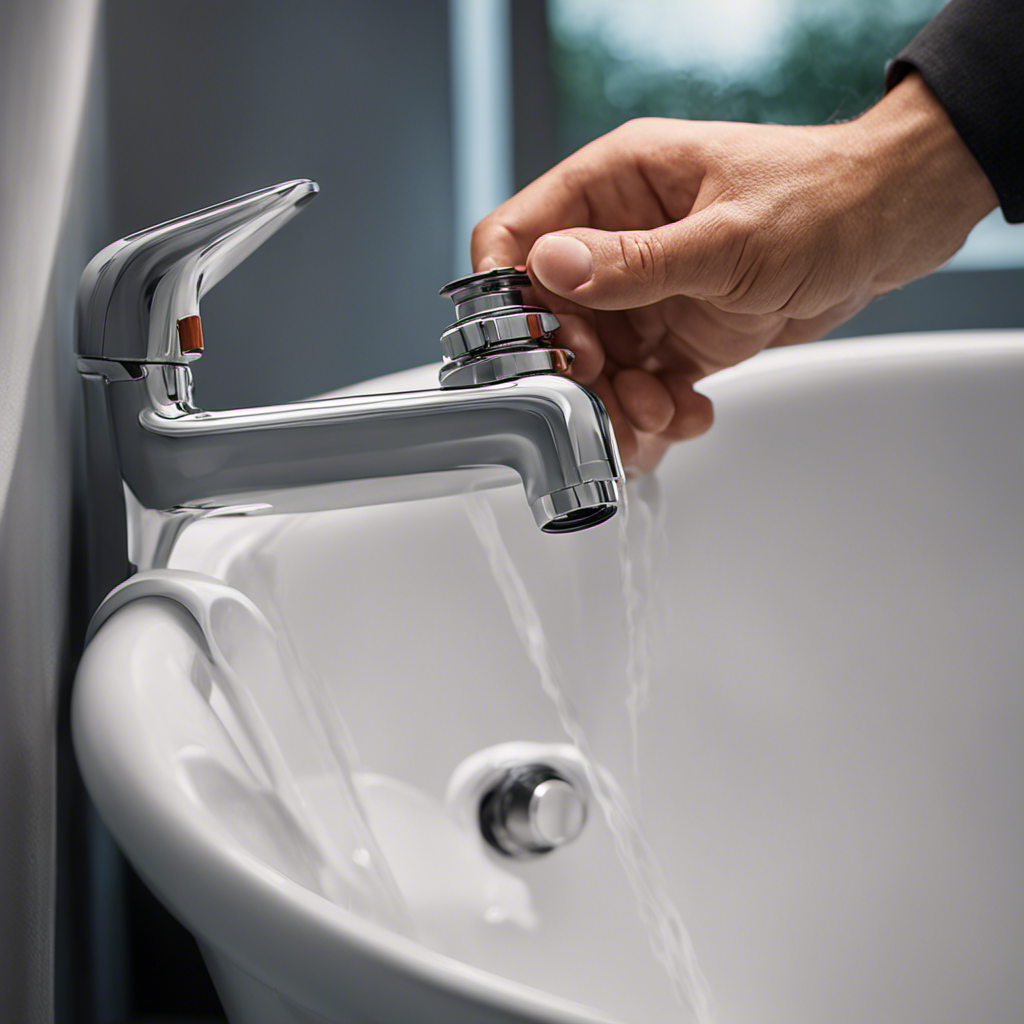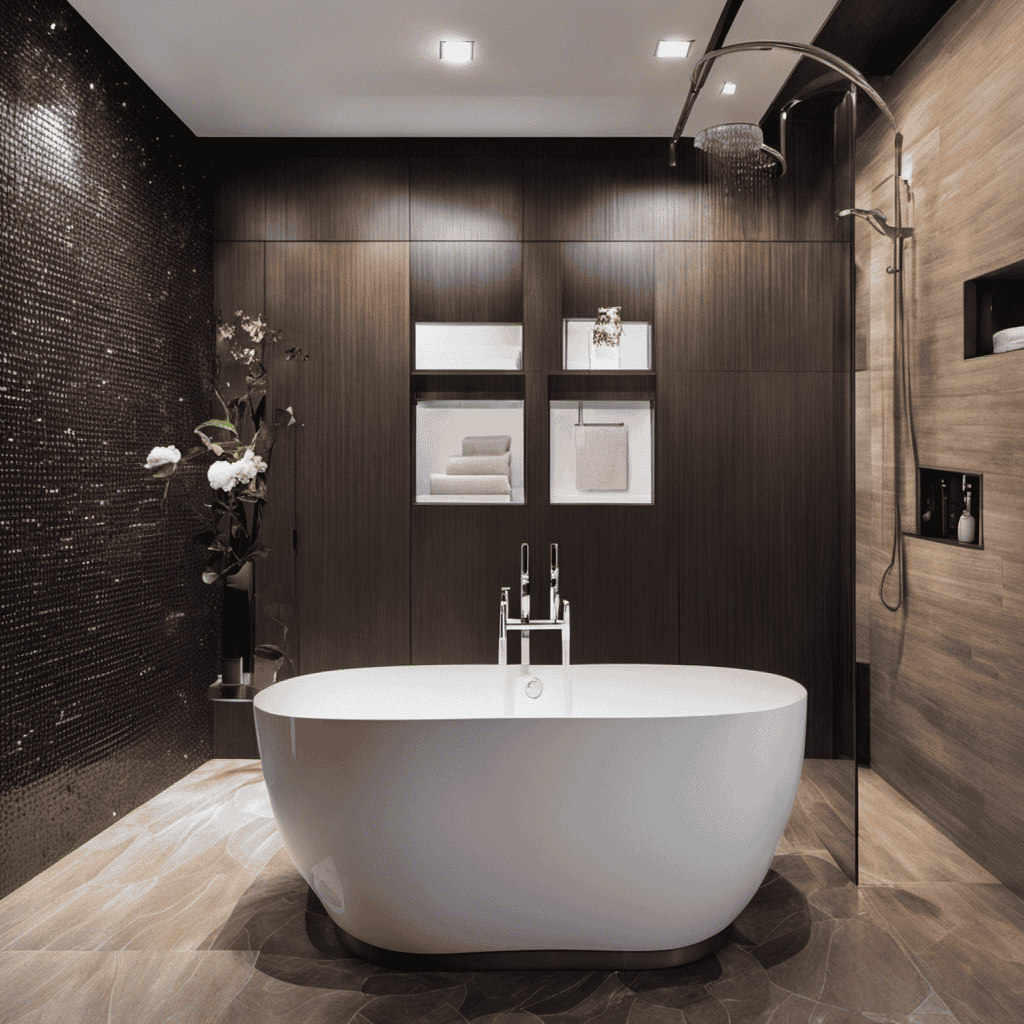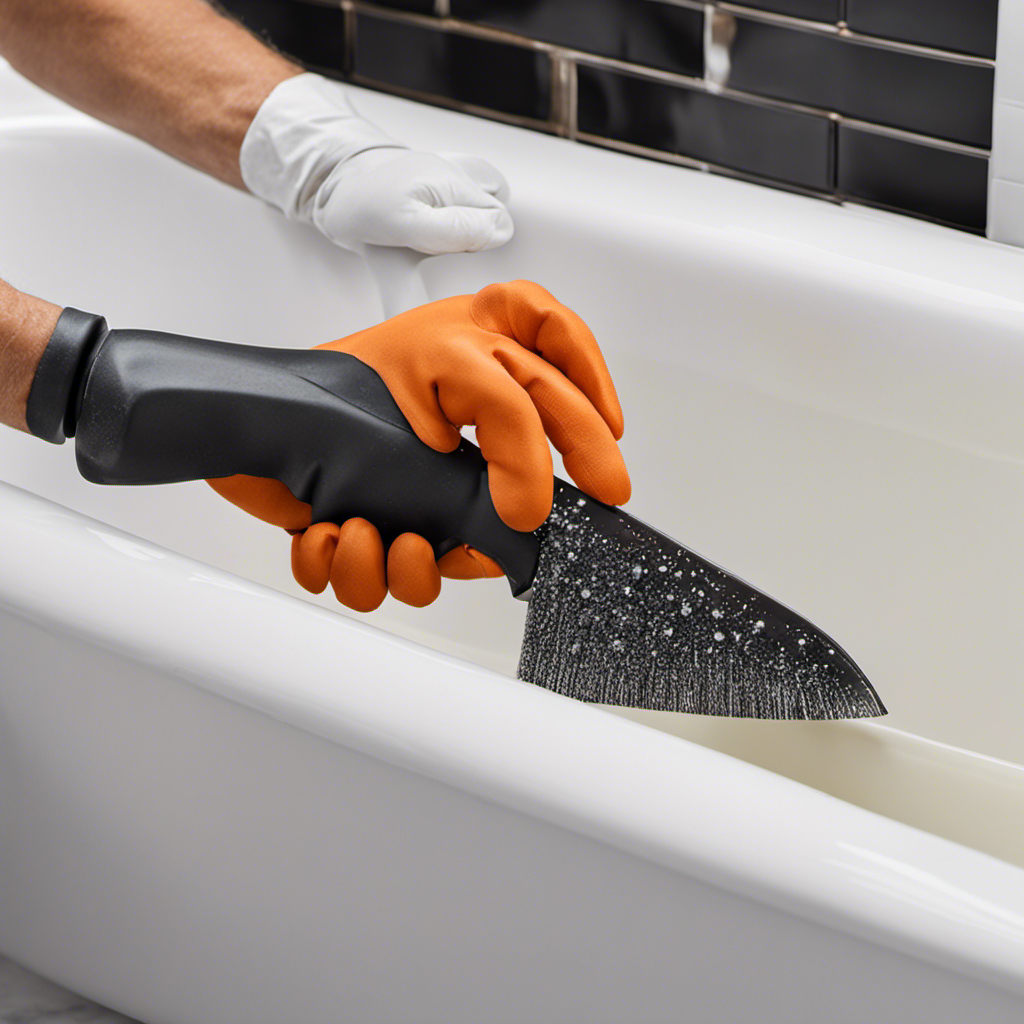I’m here to guide you through the process of adjusting the anti-scald valve in your bathtub, ensuring a safe and comfortable bathing experience.
With just a few simple steps and the right tools, you can take control of your water temperature and avoid any unpleasant surprises. No more jumping out of your skin when the water suddenly turns scorching hot or freezing cold!
Let’s dive in and get your bathtub’s anti-scald valve perfectly calibrated.
Key Takeaways
- The anti-scald valve controls water temperature to prevent burns and is an essential component in plumbing systems, particularly in bathtubs and showers.
- Adjusting the valve slowly and making small adjustments is important to avoid turning the valve too far and causing scalding.
- Regular maintenance, such as cleaning the valve to remove mineral deposits, is necessary to extend the faucet lifespan and ensure safety.
- Testing the water temperature regularly is crucial to prevent scalding accidents, protect sensitive skin, and promote overall water safety.
Understanding the Anti Scald Valve
The anti scald valve controls the water temperature to prevent burns. It is an essential component in any plumbing system, especially in bathtubs and showers. The benefits of using an anti scald valve are numerous.
Firstly, it ensures that the water temperature remains within a safe range, preventing any accidental scalding. This is particularly important for households with young children or elderly individuals who may have a reduced sensitivity to hot water.
Additionally, an anti scald valve helps conserve water by eliminating the need for constant adjustments to balance the temperature.
However, it is crucial to regularly maintain these valves to ensure their proper functioning. Regular maintenance includes checking for leaks, cleaning any mineral deposits, and adjusting the temperature setting if necessary.
Tools and Materials Needed
To get started, you’ll need a few tools and materials. Here’s a list of what you’ll need:
- Adjustable wrench: This tool will help you loosen and tighten the various components of your faucet during maintenance.
- Screwdriver set: Different screws may need to be removed or adjusted, so having a set of screwdrivers with different sizes and types will be useful.
- Plumber’s tape: This tape is essential for creating a watertight seal when reassembling the faucet after maintenance.
- Safety goggles: Protecting your eyes is essential when working with water and potential debris that may fly around during maintenance.
Faucet maintenance and bathtub safety go hand in hand. By regularly maintaining your faucet, you can ensure its proper functioning and prevent potential accidents or damage. Taking the time to perform routine maintenance not only ensures your safety but also extends the lifespan of your faucet.
Step-by-Step Instructions for Adjusting the Valve
Make sure you have your safety goggles on before you start adjusting the temperature control on your faucet. Adjusting the anti scald valve in your bathtub is a precise task that requires careful attention to detail. Here are some common mistakes to avoid when adjusting the valve:
| Mistake | Explanation | Solution |
|---|---|---|
| Turning the valve too far | This can result in scalding hot water coming out of the faucet, which can cause burns. | Turn the valve slowly and only make small adjustments until you reach the desired temperature. |
| Forgetting to check the water pressure | If the water pressure is too high, it can cause the valve to malfunction and not properly regulate temperature. | Install a pressure regulator if needed to ensure the valve works correctly. |
| Neglecting regular maintenance | Over time, the valve can become clogged with mineral deposits, affecting its performance. | Clean the valve regularly using a descaling solution to remove any buildup and ensure proper functioning. |
| Not testing the water temperature afterwards | After adjusting the valve, it’s important to test the water temperature to ensure it’s at a safe level. | Run the water for a few minutes and check the temperature with a thermometer or by touch to verify it’s not too hot. |
Now that you have adjusted the anti scald valve, it’s time to test the water temperature to ensure it’s at a safe level.
Testing the Water Temperature
Now that you’ve adjusted it, it’s time to test the water temperature to ensure it’s at a safe level. Water safety is of utmost importance, and proper valve maintenance plays a crucial role in achieving this. Here are four reasons why testing the water temperature is essential:
-
Prevent scalding accidents: By testing the water temperature, you can ensure that it is not too hot, minimizing the risk of scalding yourself or your loved ones.
-
Protect sensitive skin: Some individuals have sensitive skin that can be easily irritated by hot water. Testing the temperature allows you to avoid any discomfort or potential skin damage.
-
Ensure a comfortable bathing experience: Nobody wants to step into a bathtub with water that is either too hot or too cold. Testing the temperature ensures a pleasant and relaxing bathing experience.
-
Promote overall water safety: By regularly testing the water temperature, you are actively participating in proper valve maintenance, which is crucial for maintaining a safe and secure water system in your home.
Troubleshooting Common Issues
If the water temperature is not at a safe level, troubleshooting common issues can help identify and resolve the problem. There are several common solutions to consider when adjusting the anti-scald valve in your bathtub. First, check if the valve is set too low or too high. Adjust it accordingly to ensure a safe temperature range. Another issue could be a faulty temperature sensor or a malfunctioning valve. In such cases, it is recommended to call a professional plumber for assistance. It is important to take safety precautions when working with hot water. Always turn off the water supply before making any adjustments and use protective gloves to avoid burns. Regular maintenance and testing of the anti-scald valve is crucial to ensure the safety of your family.
| Common Issues | Solutions |
|---|---|
| Valve set too low | Adjust temperature |
| Valve set too high | Adjust temperature |
| Faulty sensor | Call a plumber |
Conclusion
In conclusion, adjusting the anti-scald valve in your bathtub is a simple yet important task that can ensure the safety and comfort of your bathing experience.
By following the step-by-step instructions provided, you can easily control the water temperature to prevent scalding accidents.
Did you know that scalding injuries account for 20% of all burns? Taking the time to adjust your anti-scald valve can significantly reduce the risk of such injuries, making your bathing experience both safe and enjoyable.
So don’t hesitate, take control of your water temperature today!










